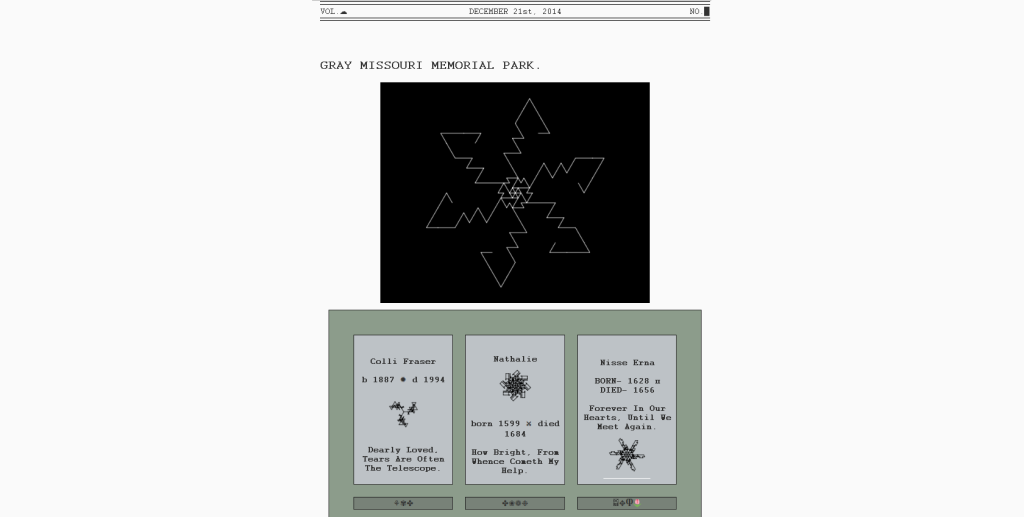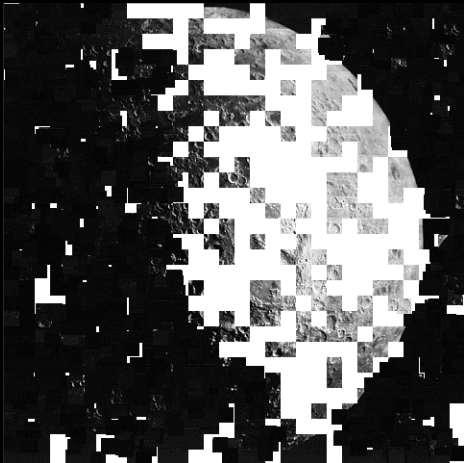
Inflorescence City is a city with inhabitants, a graveyard, a public library, and citizens.
Whenever you visit it, you’ll experience a wholly different town: The graveyard will have another name and other people lying there; the library will have other books in its shelves, different poems will be around, and the omnipresent mandalas (that might incorporate the essence of the things you can find there) will always look different – but the way a flower grows, and the problems and mechanisms of the greater politic will stay the same (and identical to ours, if you ignore that „smart bombs“ were turned into „smart bees“ in the transition), regardless of how the cemetery, that will fade as you close the page, is named.
Volume 2, available on the same page is much more „gamey“: You walk through a 2D-Grid, encountering different places, inhabitants, sounds, parables, information, images, and – again – procedural generated mandalas. Things will happen, but you probably won’t encounter a inherent meaning or purpose in this world.

Cartography of known spaces could be best described as a collection of digital-age poems: In the first one, uncartographed stars are auto-recognized by software and mixed with places and objects from the authors everyday life – both stay foreign to the reader. Afterwards, the same algorithm is used to spirit away the moon as soon obsolete usher for our center of life in an attempt to virtualize human memory. The last poem, titled „How to build a spacecraft“ shows everyday situations that are – sometimes – dissolved by trial and error – but both the solution and the way to it happen in a purely digital space, and thus can only point to their inherent emptiness.
All these things were produced by or under participation of Loren Schmidt, a developer and artist who seemingly started to experiment with the possibilities of the creative use of algorithms at least 9 years ago. Their work seems to be at least partly informed by Buddhist art and philosophy: Not only via the recurring theme of mandalas, but also through the prominent idea that emptiness is the true and ultimate core of all existence. Another recurring theme is the use of algorithms as a way of creativity – a question that got much more interest through the recent arise of „AI art“ and the debates surrounding it; Loren Schmidt, however, works the other way around: Rather than getting „compressed“ and belittled by the tools and machines (that usually turn human creativity into „models“ for later utilization nowadays), they are using algorithms and code snippets to compress, recite, and extract something that they seem to regard as a inner beauty in a (only?) seemingly inherent senseless world.
Schreibe einen Kommentar